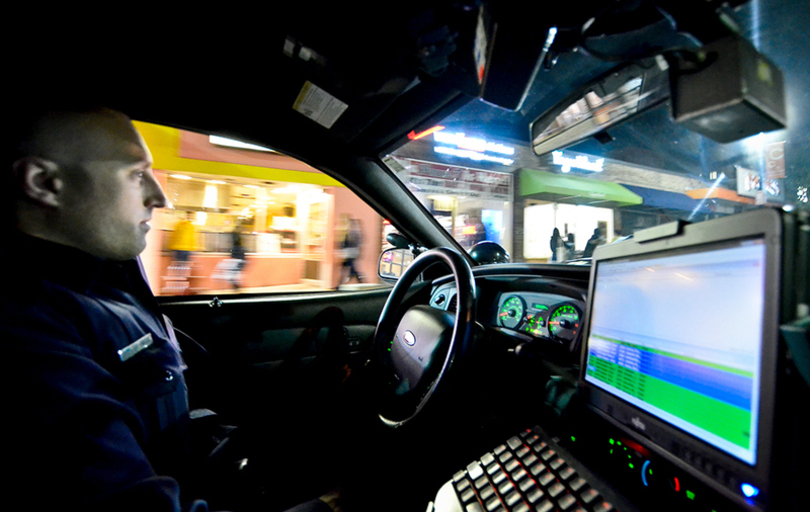DPS tests single-button system that would lock all buildings on campus

DPS tested using a single-button system to lock all buildings on campus over Thanksgiving break. Daily Orange File Photo
Syracuse University’s Department of Public Safety is in the process of testing its single-button system that will lock buildings on campus in the case of an emergency.
Over Thanksgiving break, DPS tested its new button that will lock all buildings on campus that require an ID for entry. This includes a total of 95 academic, residential and administrative buildings, said Tony Callisto, senior vice president and chief law enforcement officer.
There will be another test over Winter Break and it is believed that it will be fully operational by the spring 2016 semester, Callisto said.
This single button came in light of the use of the Orange Alert system that put the university on lockdown when the Syracuse Police Department was searching in Oakwood Cemetery for suspects in an off-campus homicide on Oct. 14.
During that time, the university had a system that was able to lock all ID-required entry buildings individually, but found that it was a bit “cumbersome.”
“They were able to use the system, but it certainly would have been much more efficient if we were able to put what we call a ‘single button,’” Callisto said.
The panel that was able to lock each building individually still exists. There is now only the addition of an icon that has the ability to lock all of the ID-required buildings at once, Callisto said. Access to this system is held in the Communications Center at the hands of the dispatchers inside. They are, however, under the direction of the DPS officer or the supervisor on the field of the crisis situation, he said.
In addition, DPS is cognizant of the amount of alerts it sends out to students. DPS only distributes Orange Alerts if there is “information on the ground that there is a threat to life,” Callisto said. DPS will treat the button in a similar manner, he added.
Since the button does lock many of the doors around campus, there is some concern as to what students should do if they are walking when the academic buildings are locked. Callisto said SU community members will still be able to access the building using their IDs.
This is still concerning to Can Aslan, president of the Graduate Student Organization, and his board. They said in a joint email, “We’re concerned that once the building(s) is/are locked, students remaining outside who receive the alert and should go inside might have difficulty locating their ID cards, rushing to the closest door with ID access, and getting inside.”
Student Association President Aysha Seedat said she believes that while the button is “amazing,” communication should also be enhanced.
“I think that when the shelter in place alert went out there was a lot of confusion among students,” she said. “But in conjunction with this system, if it is ever activated, the messaging (should be) sent out saying ‘all academic buildings are being locked, here’s why and we will keep you updated.'” but in conjunction with this system, if it is ever activated, the messaging (should be) sent out saying ‘all academic buildings are being locked, here’s why and we will keep you updated,’” she said.
DPS is accredited by The International Association of Campus Law Enforcement Administrators (IACLEA), a pro association of campus law enforcement executives that promote and develop enhancements to the profession, provide training and assist in sharing resources, said John Leonard, director of Accreditation and Loaned Executive Management Assistance Program Services at IACLEA.
While Leonard is not familiar with the exact system SU will be using, he said he applauds and supports any university that takes advantage of tech systems to make its campus and community safer.
“There are advances in security and technology being made all the time – horrific incidents have caused public safety institutions to be concerned about safety,” Leonard said. “If you can prevent access and prevent an active shooter on campus that is always a good thing.”
Callisto, SU’s chief law enforcement officer, said adding better technological features to security systems “is smart business but it is not a ‘cure-all.’”
“It is important that community members, students, faculty and staff are the eyes and ears of the campus and that suspicious activity is reported immediately,” he said.




